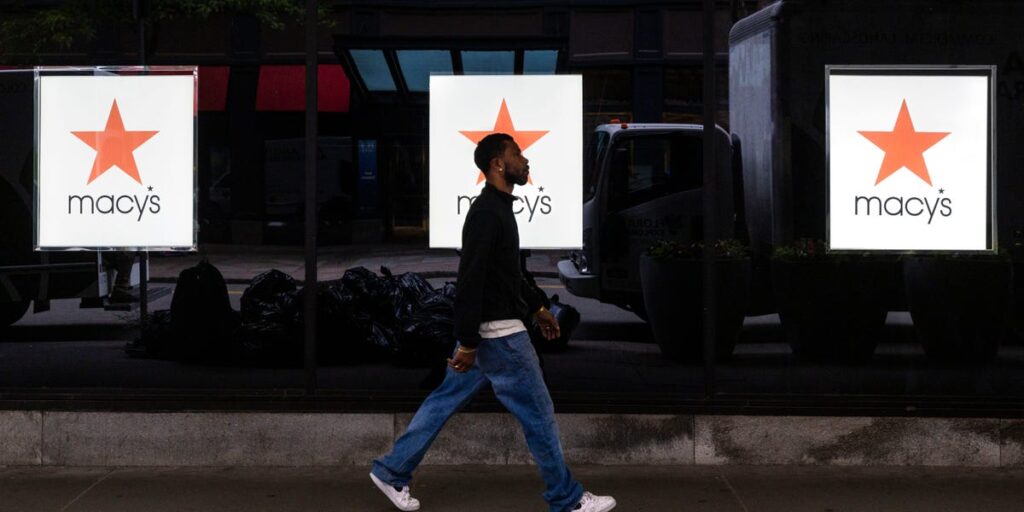Macy’s is betting on high-earners to lead its comeback to retail dominance.
The department store chain topped Wall Street’s estimates for the second quarter with net sales of $4.8 billion, the company reported Wednesday.
CEO Tony Spring told investors on Macy’s earnings call that higher-income households are driving part of the recovery.
Spring said that more than 50% of Macy’s customers come from households earning over $100,000.
“While we have exposure to lower income levels, it’s not nearly what it was,” he said, adding that Macy’s also reaches more affluent consumers through its Bloomingdale’s brand. “I think as you go by income level, you certainly see a healthier performance in the higher tiers of income.”
Spring said Macy’s consumers overall have been “choiceful” but “resilient” despite some of the price increases the company has made in response to tariffs.
“We feel good about our customer. She’s buying newness. He’s buying fashion. Interested in the new brands and the changes in the assortment,” Spring said.
Some of those newer brands in the assortment at Macy’s stores include Abercrombie Kids, Sam Edelman, Hugo Boss, and Good American.
Spring said the sales growth is occurring across its stores, including its Bloomingdale’s, Macy’s, and Bluemercury brands. While tariffs remain a concern for all retailers, Macy’s said its plan to revive growth includes improving the customer experience — the company said it’s “reimagined” 125 Macy’s locations, product selection, and inventory heading into the fall.
Last quarter, the company said it would begin raising prices on certain items in response to tariffs. However, it said it’s too early to tell how consumers are reacting to the hikes. Macy’s executives said customers continued to spend on new fashions, fine jewelry and watches, and more.
In recent years, Macy’s has struggled to live up to its former retail dominance, with slumping sales, store closures, and a buyout offer to take the company private. Ultimately, Macy’s declined the buyout from an investor group that included Arkhouse and Brigade Capital, betting on its turnaround.
High-earners aren’t the only focus of Macy’s comeback effort. The company said it tries to offer shoppers options in a wide range of price points.
“When you can go from off-price to luxury, you’re not reliant on one thing,” Spring said, adding, for example, that the company didn’t stock up as much on items that it thought were “too big a reach for the consumer.” “That’s one of those moments where being this modern marketplace or department store is an absolute advantage in this environment.”
Read the full article here
















